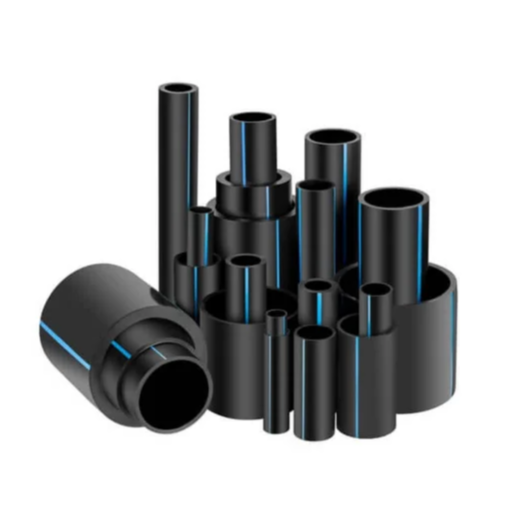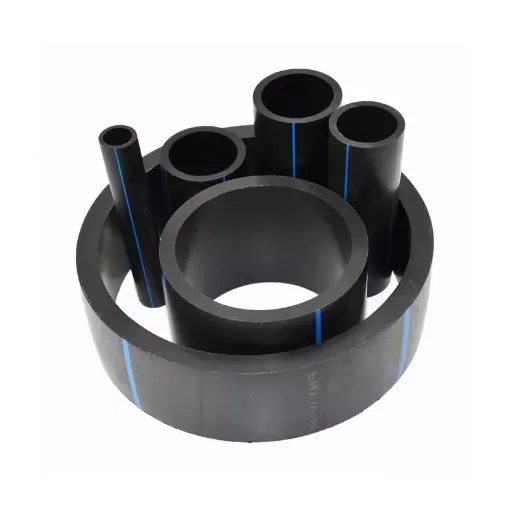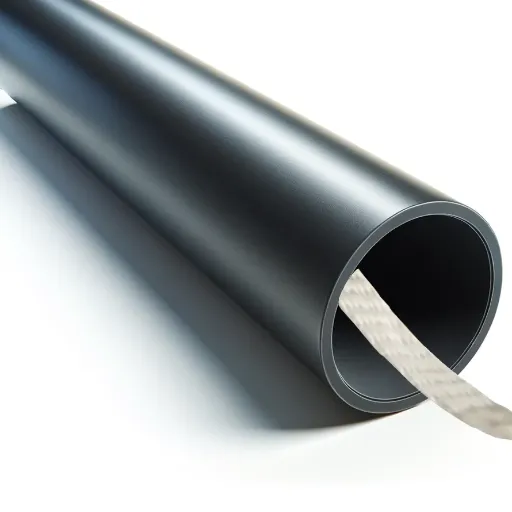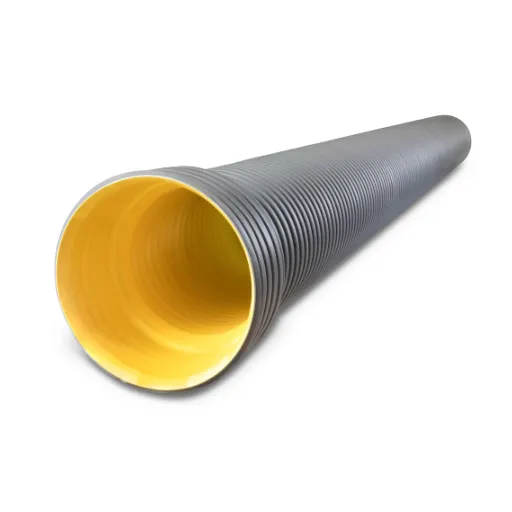High-Density Polyethylene (HDPE) pipes have become a cornerstone in modern infrastructure and industrial applications, revolutionizing the way we transport water, gas, and other critical materials. Known for their incredible durability, flexibility, and resistance to corrosion, HDPE pipes offer an efficient and cost-effective solution across a wide range of industries. Whether you’re an engineer, contractor, or someone curious about sustainable piping systems, understanding the ins and outs of HDPE pipes is essential to making informed decisions. This guide will walk you through everything you need to know about HDPE pipes, including their properties, applications, advantages, and the key considerations for their installation and maintenance. Prepare to explore why HDPE pipes are rapidly becoming the go-to choice in piping technology.
What Are the Uses of HDPE Pipes in Various Industries?
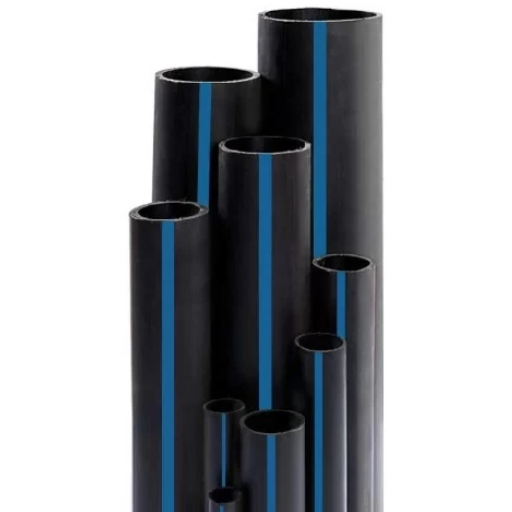
Why Are HDPE Pipes Preferred for Water Distribution?
Water distribution systems widely favor HDPE pipes due to their lasting durability, lack of leaks, and environmental stress tolerance. Unlike traditional steel or concrete materials, HDPE pipes have unparalleled corrosion resistance. It is safe to say that they sustain functionality even under soil conditions with fluctuating water quality. Hence, these pipes can be used for urban and rural water supply networks.
Apart from that, HDPE pipes are flexible and have high resistance to impacts, which helps them deal with damage caused by ground seismic shifts. Such overwhelming flexibility means there is a reduced likelihood of failure and supply interruptions in the long run. Moreover, the lightweight of these pipes means easier transportation and installation, which greatly reduces project costs.
The seamless joining technique of HDPE pipes, including heat fusion, is another major advantage. This method reduces the chances of leaks, which is very important in conserving water and making a system efficient, by creating robust, continuous joints. Also, the inner surface of HDPE pipes is smooth, which minimizes friction and ensures greater flow rates as well as lower energy use when pumping water. These factors together make HDPE pipes a rational and sustainable option for modern water distribution systems.
How Do Polyethylene Pipes Support Gas Distribution Networks?
Polyethylene pipes are exceptional in their flexibility, resistance to environmental stress, and durability, which makes them invaluable polyethylene pipes in gas distribution networks. They are also very reliable in urban and rural areas because of their high resistance to chemical degradation and corrosion. These pipes being lightweight makes gas distribution network projects easier in terms of transportation and installation.
PE pipes have a core advantage of maintaining high structural integrity during temperature and pressure fluctuations, making them efficient in the transportation of natural gas. The flexibility in polyethylene enables it to withstand seismic ground movements, soil shifts, or loads from traffic, making breaks and leaks rare and increasing the safety and longevity of the gas distribution system.
Furthermore, the heat fusion welding process used for PE pipes strengthens the entire network as the joints are seamless and leak-proof. Gas delivery is consistent to consumers, which minimizes gas leaks due to these joints eliminating weak points. Consequently, operational efficiency and maximum safety have made the industry-wide standard for modern gas distribution networks to use polyethylene pipes.
What Makes HDPE Pipes Suitable for Sewage and Drainage?
High-density polyethylene (HDPE) pipes are ideal for sewage and drainage applications because of their remarkable strength, chemical resistance, and flexibility. These pipes are capable of enduring severe conditions, including contact with harsh chemicals often present in wastewater and sewage. Their non-corrosive character guarantees a long service life, even in aggressively acidic environments or other corrosive agents that would normally destroy traditional materials such as metal or concrete pipes.
Additionally, HDPE pipes are resistant to extreme pressure as well as environmental stresses, which is another benefit. HDPE pipes have low susceptibility to cracking and impact damage; therefore, they are useful not only in high-load buried installations, but also in ground movement areas like seismic zones. The smooth internal surface of these pipes reduces internal friction, facilitating the flow of wastewater and preventing blockages. This further enhances the reliability of sewage and drainage systems.
Because HDPE pipes are so easy to install, they are the primary choice for sewage and drainage systems. They are light, easier to handle, and more cost-efficient when it comes to transportation, yet they perform well under extreme conditions. Furthermore, HDPE pipes can be joined using heat fusion, making durable, leak-proof connections that protect system integrity. All these factors make HDPE pipes a low-maintenance, sustainable solution for modern sewage and drainage infrastructures.
How Does Quality Control Affect HDPE Pipe Performance?
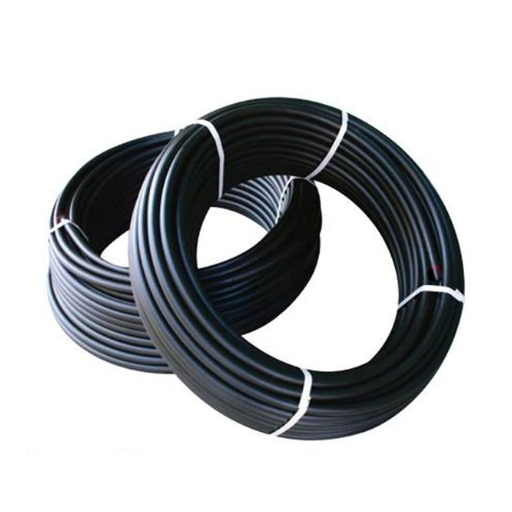
What Are the Standard HDPE Quality Measures?
HDPE pipes’ performance and reliability are directly related to the manufacturing and application processes with quality control standards. Special attention must be paid to the fulfillment of ASTM International standards, as well as ISO standardswhich are for polyethylene piping systems. These standards also determine the value of tensile strength, density, thermal stability, and environmental stress cracking resistance.
HDPE pipes are designed to ensure structural integrity and operational safety across industrial applications. Such pipes undergo custom verification processes tailored to specific tasks or industries. For instance, OIT oxidative induction time and creep testing of the material help assess its stability under heat and oxygen exposure.
Apart from special testing HDPE pipes undergo, they are also subjected to non-destructive testing like ultrasonic testing and dimensional controls to check wall thickness and uniformity as well as patch voids that may be present. Furthermore, HDPE pipes are subjected to numerous quality control processes, including hydrostatic design stress tests, creep testing, and exothermic tests, to evaluate long-term reliability and endurance in active use scenarios. These measures reinforce the HDPE pipes’ safety and reliability as critical components across various industrial contexts.
How Is Corrosion Resistance Tested in HDPE Pipes?
The testing methods for the corrosion resistance of HDPE pipes require both in-person and simulated laboratory testing in areas such as fieldwork, where an attempt is made to replicate as closely as possible the conditions the piping will be exposed to over long periods. Immersion tests are run by submerging HDPE samples in some of the most corrosive reagents like acids, alkalis, or saline water to check for chemical resistance as well as weight degradation, which is monitored in real time with each additional measurement taken weighing factors like strength, and surface level damage.
Degradation evaluation can also be performed using accelerated aging tests, which expose the specimen to high temperature and oxidative agents to imitate long-term exposure. The molecular changes in the polymer structure, which indicate chemical decay, can be evaluated with spectroscopic methods such as FTIR (Fourier Transform Infrared) analysis. Thermal analysis methods, such as DSC (Differential Scanning Calorimetry), also assess the effects of the harmful environment on thermal stability.
Monitoring HDPE pipes under continuous chemical exposure in systems such as wastewater or chemical processing plants yields useful data that, when paired with statistical modeling, provides the necessary results to meet criteria from an international standard body like ISO 4427. Their ability to withstand chemical and environmental corrosion and ensure their reliability in conditions of high-strain industrial applications is exemplified through this varied approach.
How to Choose HDPE Pipes for Industrial Applications?
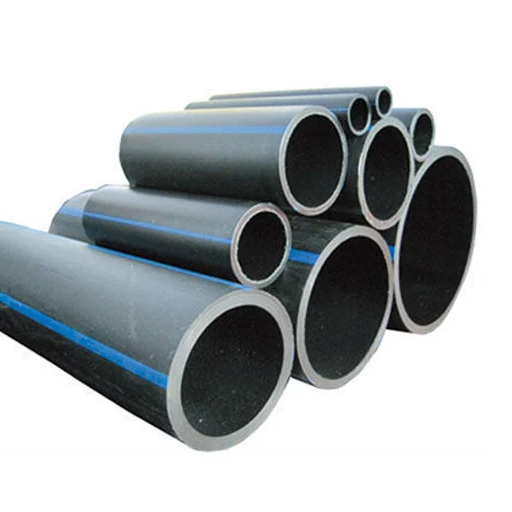
What Factors Influence the Selection of HDPE Pipes?
In the case of using HDPE (High-Density Polyethylene) pipes, an industrial grade of these might be used, and their selection would be based on an internal operational checklist. Such a checklist would need to ensure that the pipes deliver optimal performance in HDPE (High-Density Polyethylene) pipes, considering their lifespan and safety.
- Pressure Nominal Ratings: One of the primary concerns is the pressure rating of the pipe. Despite the pressure, there must be no damage to the pipe’s internal structure
- Chemical Compatibility: Most industries make use of various chemicals; therefore, there is a need to determine if the pipe will withstand the chemical exposure in question. The various components that need to be included are acids, bases, hydrocarbons, and other chemicals. Any incompatibility will successfully lead to the pipe being destroyed.
- Pipe thickness and diameter: The wall thickness standardizes the pipe’s diameter as SDR (Standard Dimension Ratio). In this case, the flow capacity is likely to be higher than normal or usually encountered.
- Temperature Resistance: This factor is crucial in industries dealing with hot liquids, steam, or working in very cold conditions, as it involves the high and low limits of temperature the material can withstand. HDPE pipes can operate in a temperature range, but specific details are required.
- Environmental Factors: The UV exposure, installation depth, pressure, soil chemistry, and temperatures also have an impact on the functionality of the pipes. The pipes might require special UV-resistant or other protective coatings for outdoor use.
- Service Life and Long-Term Load Capacity: These factors were derived from performing stress cracking tests and evaluating the pipes for creep resistance under sustained loads. The durability expectations from the pipes should align with the intended duration of the project.
- Compliance with Standards: Pipes meant for industrial use should conform to universal and local standards like ASTM D3035 or ISO 4427 for them to be accepted as industrial compliant. These standards define the requirements for safety limits, material features, pressure limits, and stress considerations.
- Cost Efficiency: The overall spending, including transportation and installation, maintenance of HDPE pipes alongside the project’s size and intricacy, defines whether it is economical or not, even while the pipes are known to be cost-effective.
- Jointing and welding: Considerations such as butt fusion, electro-fusion and flanging must be compatible with environmental factors ands maximum operational pressures. Adequate jointing helps to minimize long-term leakage.
- Abrasion Resistance: For slurries and other abrasive materials, it is necessary to have HDPE pipes with increased abrasion resistance to decrease wear and extend the life of the operational function.
Industries can ensure optimal selection and performance of HDPE pipes in various applications through evaluation of these factors, project requirements, and a detailed analysis of the project facets.
How Do Fittings and Valves Impact HDPE Pipe Systems?
Fittings and valves are some of the most important parts of HDPE pipe systems since they directly affect functionality, efficiency, and longevity. As design changes, cross sections of a pipe might require branching, changing direction, or even size. Fittings like elbows, tees, and couplings all make sure that systems can be aligned to specific design criteria. To avoid leaks from occurring, especially in high-pressure settings, precision-engineered fittings within the system will make sure pressure drops are kept minimal.
Controlling flow rates, isolating parts of the pipe system, and even regulating pressure falls under the responsibility of valves. Exposed to harsh chemicals and high temperatures for long periods, modern HDPE-compatible gates, balls, and butterfly valves are engineered to handle it all. In addition, they are integrated with HDPE piping, which ensures that the fluid dynamics can flow seamlessly whilst strength and performance, alongside materials and design, are heightened.
By having the right components, fittings, and valves, further reduce operational inefficiency by strategically lowering frictional losses. Components designed to contain slurry, gas, or even corrosion will aid in the prevention of degradation, which enhances reliability over time. With the above points in mind, it becomes easier to meet performance optimization, lowered maintenance, increased durability, alongside lessened demands for HDPE pipe systems.
Why Is Polyethylene Preferred for High-Pressure Applications?
Due to its unique mechanical and chemical characteristics, High-Density Polyethylene (HDPE) is a popular choice for high-pressure tasks. Its exceptional tensile strength and elasticity enable it to withstand enormous pressure differentials without cracking or deforming, which makes HDPE suitable for both static and dynamic load applications. Additionally, its extraordinary anti-chemical corrosion properties are vital in systems that are subjected to aggressive chemicals or extreme environmental conditions.
Furthermore, reduced operating costs and increased efficiency are achieved due to HDPE’s low frictional coefficient, which minimizes energy losses in fluid transport. It also has superior fatigue resistance, which increases the material’s durability under cyclic pressure often encountered in municipal and industrial applications. New advancements to polyethylene formulations have been made to increase their range of operating temperatures, pressures, and strength for use in heavy-duty systems without compromising performance.
HDPE pipes are known for their fusion-welded joints, which, unlike mechanical joints, provide leak-proof and seamless interconnections. This advantage mitigates the chances of contamination or water loss, which increases the reliability and safety of the pipeline system. When taking into account the lower maintenance costs, the prolonged service life, and the overall cost-effectiveness, it is easy to understand why polyethylene is the preferred material for high-pressure applications in oil and gas, water distribution, and mining industries.
What Is the Grading of HDPE Pipes and Its Importance?
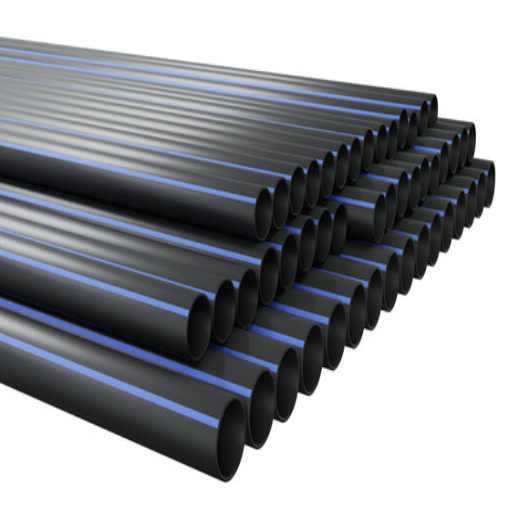
How Are HDPE Pipes Graded Based on Pressure Applications?
The pressure rating of an HDPE pipe, which ranges between 12.5 to 32 mm, is based on its wall thickness, stress resistance, and material density. This categorization is done by internationally accepted SDR (Standard dimension ratio) or PN (Pressure nominal) rating systems. Such classifying methodologies signify the foremost pressure an HDPE pipe can sustain within standard operating conditions. To elucidate, a lower SDR means thicker walls, thus higher pressure capacity.
In my opinion, the classification of HDPE pipes directly impacts system reliability and safety. Meeting operational requirements is only possible when an exact pipe rating is selected; however, environmental context, surge possibilities, and fluid nature contend as paramount as well. For instance, water distribution pipelines may require lower pressure ratings compared to industrial-grade chemical transport pipes. Such differentiation is what enables pipeline systems to retain dependability and unwavering durability over prolonged periods.
Besides this, I appreciate that compliance with established grading criteria enhances efficiency and eliminates the risk of over-engineering or underperformance. When HDPE pipes are graded appropriately, the corresponding project’s downtime and maintenance expenditures are greatly minimized. Thus, this grading system, while a technical requirement, is equally important to the design of infrastructure and risk control in multiple domains of critical reliance on high-pressure pipelines.
What Role Does Abrasion Resistance Play in Pipe Grading?
Abrasion resistance is one of the key grading considerations for pipes, especially in cases where the pipes are subjected to abrasion from sand, gravel, or slurry. It affects the durability and service life of the pipeline in extreme operating environments, as well as the maintenance interventions required over time. In extreme service conditions like dredging, mining, oil and gas, high abrasion resistance ensures reduced wear and increases structural integrity over time, which is fundamental for high-demand industries. Outlined below are five features of pipes where abrasion resistance plays a critical role:
- Material Longevity
The degree of abrasion resistance determines the life of the material, which directly impacts the surface wearing due to physical contact with abrasive material and improves overall life while reducing replacement costs and downtime.
- Flow Efficiency Maintenance
Higher abrasion resistance translates to smoother flow as surfaces become less prone to roughness, which leads to smooth, unrestricted pumping.
- Structural Integrity Under Stress
Abrasion-resistant materials possess superior durability against mechanical abrasive movement stress that would otherwise result in cracking or fracturing materials of lower grade.
- Customization For Specialized Functions
Some core activities, like slurry transport pipelines and pneumatic conveying systems, require pipes that can withstand high levels of abrasion, both mechanically and physically. Grading takes this into account so that the material used fits operational requirements the best.
- Lower Maintenance Expenses
Pipes that are graded for high abrasion resistance tend to have enhanced durability, which translates into lower maintenance and repair work. These savings are further compounded with lowered operational expenditures and better cost-efficacy throughout the lifecycle.
These considerations illustrate that abrasion resistance is not simply a characteristic of the material, but rather a dominant factor in flow line pipe grading, defining grade performance, dependability, and economic viability of pipeline frameworks within intense operational scenarios.
How Can You Ensure Proper Installation and Maintenance?
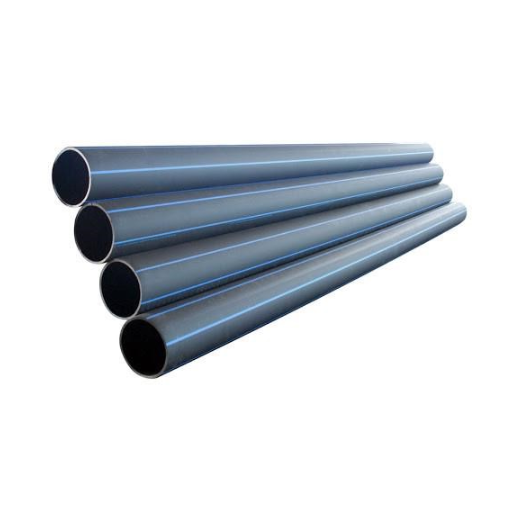
What Are the Best Practices for Welding HDPE Pipes?
When it comes to welding HDPE pipes, following specific steps is critical in order to attain a secure, lasting joint. To meet business goals, the procedures should be tailor-fitted with maximum results in mind:
- Know the Welding Techniques
The two main ways to weld HDPE pipes are through butt fusion and electrofusion welding. In butt fusion, the pipe ends are heated and pressed together under specific controlled pressure while electrofusion relies on fitting with heating elements to weld the pipe. Each method has its pros and cons depending on the pipe’s diameter, external environment, and operational requirements.
- Correct Preparation of Pipe Ends
This is a critical factor when it comes to strong welds. It requires the cleaning of the pipe ends of grease, oxidation, or dirt with a certain level of detail. Mechanics, in particular scrappers, should take care of surface preparation, especially for purposes of electrofusion welding.
- Regulate Temperature and Pressure
Both butt fusion and electrofusion welding techniques need a certain degree of temperature and pressure. With butt fusion, the favorable temperature for is frequently set at 390°F to 450°F (200°C to 232°C) depending on the pipe specifications. Too much or too little pressure will lead to weak joints or deformities, making the weld lose its strength.
- Make Sure Of Stability and Alignment
Attaining the appropriate alignment of the pipe parts is very important. Inappropriately aligned pipes can lead to uneven welds and decrease the structural integrity of the assembled pipe joints. Alignment clamps and fusion machines improve stability and even achieve better weld quality.
- Control Solidification and Cooling
Do not undermine the joint’s relief period. Applying any external forces prematurely can damage the weld. Strength can be compromised by too much movement or even premature cooling. There are strict guidelines for abiding by the manufacturer’s specifications about the pipe’s thickness, temperature, and surroundings.
- Conduct Inspection and Testing
The post-weld examination looks into the seal crafted and evaluates its integrity using various visual tests and Destructive Tests (NDT). The quality may be compromised because of several factors such as poor visible welds, lack of alignment, gaps, or irregular bead formation become an issue. Performing pressure tests on the pipeline guarantees that there are no leaks during operational use.
To enhance safe installation while handling HDPE pipes with complex structures for prolonged use, one must effortlessly perform all incorporated best practices using advanced welding tools in addition.
How to Avoid Hazardous Issues in Pipe Installation?
The installation of pipes entails a complex set of tasks that are labor-intensive. A pragmatic blend of preparation, incorporating emerging technologies, following industry protocols, and integrating advanced tech, all contribute to the avoidance of any malicious intricacies. Damage and corrosion, as well as the degree of resistance towards chemicals, are some of the challenges that a compatible pipe could face. As an illustration, HDPE pipes, known for their strength and flexibility, do require special care when placed on the surface due to the need for UV protection.
Alongside structural instability, the presence of subsurface utilities and water intrusion poses an environmental challenge, and the need for further site inspections arises. Commanding control over the soil, proper trenching dimensions, and suitable bedding materials are ideal to stabilize pipelines while shielding them from structural stress. Relying on lasers and GPS-guided trenching tools provides an opportunity to enhance CNC machines through cuts definitive to alignment and slope, effectively minimizing failure or inefficient flow drainage.
Real-time monitoring during ultrasonic testing, including X-ray examinations on weld seams, contributes to identifying deformities under extreme load conditions. Post-installation, rigorous pressure coupled with hydrostatic testing ensures the accuracy of values placed on gauges operated under simulated conditions at work. Maintaining documents alongside a compliance checklist guarantees that all steps will be met while increasing traceability and guaranteeing bypassing regulatory measures.
Lastly, ensuring employee safety reduces the risks present at the workplace. Relevant training, PPE enforcement, and safety equipment like automatic shut-offs are fundamental prerequisites. Following these practices diligently will not only mitigate risks but also improve the lifespan and reliability of the pipeline infrastructure.
What Are Common Fittings Used in HDPE Pipe Systems?
The system of pipes made of high-density polyethylene (HDPE) depends on many different types of fittings for easy and flexible installation, robust connections, and proper system configurations. The following fittings are commonly found in HDPE pipe systems:
- Electrofusion Fittings: These have an electric heating coil embedded in them. This coil allows bondable fittings to pipes, leading to homogeneous, leak-free connections. They work best in applications with high-pressure durability.
- Butt Fusion Fittings: These fittings are meant for the direct welding of HDPE pipes. Their bond of seal and surplus joining parts assures that no additional sealing bonds will be required.
- Compression Fittings: These fittings are most applicable in low-pressure scenarios. Instead of heat welding to the hose, these fittings need only specialized tools to bring them into place.
- Flange Adapters and Backup Rings: To integrate HDPE pipe systems with other materials and frameworks, these two components are crucial. Flange adapters allow for the transition, while the backup rings provide inflation-tight pressure resistance.
- Saddle Fittings: These are useful for making branch connections. They are effective for system expansions or changes, and can be fused or clamped to HDPE pipes.
Due to the adaptability of HDPE, these fittings can be used in the water supply, gas piping systems, and even in industrial fluid transfer. When choosing appropriate fittings, system functionality is crucial, which includes, but is not limited to, pressure limits, climate, and particular details of the work.
References
Frequently Asked Questions (FAQ)
Q: What are the main types of HDPE pipes?
A: HDPE pipes come in various types, including those used for potable water, irrigation, stormwater, and hazardous waste. Each type is designed to meet specific needs and is resistant to chemicals, making them suitable for a wide range of applications.
Q: How are HDPE pipes graded?
A: Grading HDPE pipes involves assessing their pressure ratings and durability. For example, drinking water pipes with pressure rates are often labeled as blue for PN10, while other applications might use red for PN6. Understanding these grades is crucial for selecting the right pipe for your needs.
Q: What makes HDPE pipes a popular choice for various applications?
A: HDPE pipes are exceptionally durable and resistant to chemicals, which makes them suitable for several applications, including gas distribution networks, telecom, and protecting underground cables. Their flexibility and strength also make them ideal for industrial and residential applications.
Q: Can HDPE pipes be used for potable water supply?
A: Yes, HDPE pipes are commonly used for potable water supply. High-density polyethylene pipes in water supply systems are valued for their durability and ability to withstand pressure, ensuring safe and reliable water distribution.
Q: What are the benefits of using HDPE pipes for irrigation?
A: HDPE pipes are highly flexible and resistant to environmental stress, making them ideal for irrigation systems. They can handle various pressures and are less likely to leak, ensuring efficient water delivery and reducing water loss.
Q: How do HDPE pipe fittings and valves work?
A: Fittings to HDPE pipes, such as mechanical fittings and valves, are designed to ensure secure connections and efficient flow management. These components are vital for customizing pipe systems to meet specific industrial needs and applications.
Q: What are the advantages of using HDPE pipes for hazardous waste management?
A: HDPE pipes are resistant to a wide range of chemicals, making them ideal for hazardous waste management. Their durability ensures long-term reliability, reducing the risk of leaks and environmental contamination.
Q: How do HDPE pipes compare to other plastic pipes?
A: HDPE pipes offer superior flexibility, chemical resistance, and durability compared to other plastic pipes. These features make them a preferred choice in the pipe industry for applications requiring robust and reliable piping solutions.
Q: Are HDPE pipes suitable for telecom applications?
A: Yes, HDPE pipes are used in telecom applications to protect cables. Their flexibility and strength help protect underground cables from environmental stress and damage, ensuring reliable communication networks.
Q: What role do industrial equipment suppliers play in the HDPE pipe industry?
A: Industrial equipment suppliers are crucial in providing the necessary tools and components to install and maintain HDPE pipe systems. They ensure that businesses have access to high-quality products and technical support for various applications.



